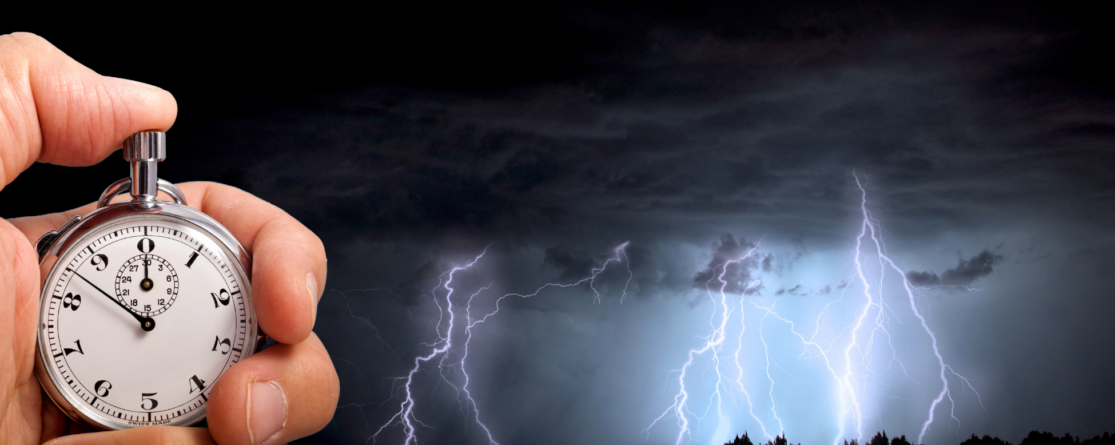Good timing is an important component in determining the successful launch of an independent adjuster’s career. But waiting for the exact month, the perfect storm, or the ideal employment landscape can actually cause more problems and more delays than not. Getting started at any time is better than not getting started at all. And there are more reasons why you shouldn’t wait to start training and get licensed.
Many folks considering independent adjusting take a wait-and-see approach, straddling the fence, as the storm season draws near. And there are some good reasons for doing so: the primary one being that there is no reason to invest time and money without the certainty of a real opportunity. The idea is to wait until a hurricane, earthquake, etc, hits and then pursue adjusting when demand is at its highest.
This seems a perfectly reasonable approach at first glance. However, I would contend that waiting for a sure thing often results in missing out on the opportunity altogether. If you aren’t ready by the time the big one hits, the truth is, it’s probably too late.
Let’s examine why:
1. Licensing takes time
Most adjusting firms, at the very least, want licensed adjusters, so having your home state or designated home state license in hand is key. During or after a catastrophe, IA Firms will usually deploy adjusters who hold a license in the state affected first. They’ll also tap into licensed adjusters in surrounding states that can deploy and arrive in the affected state quickly.
For that reason, getting reciprocal licenses in other states, especially those near your residence, is step two.
While getting your adjuster license and reciprocal licenses is relatively quick compared to, say, a college or trade school degree, it does take time. In addition to studying for, scheduling, and passing your home state’s exam, you must also wait for the license application to be processed. This can take weeks in some states. Especially when you consider that some states require fingerprinting and background checks. And remember, if the state you want your license in IS the state suffering from a catastrophe, some government services may be limited or shut down entirely.
Add it all up, and the entire process can take two months or more on occasion. If you have to wait two months on a license in the wake of a major disaster, you’ve missed the biggest opportunity for entrance. There will still be work, but breaking in during a storm works best when you’re ready before the storm.
2. Preparation is key to successful first deployment
Imagine entering an environment shaken physically and emotionally to its core. Imagine being tasked with the responsibility of interpreting complex insurance policies with specific riders and endorsements, of applying that policy within the framework of a very particular set of physical circumstances requiring precise damage analysis, knowledge of materials and methods of repair. Imagine doing so calmly, and confidently while under immense pressure from a myriad stressed/confused/bewildered policyholders. Now imagine being expected to do that 3 to 6 times a day starting yesterday.
In every first deployment, there will be an element of baptism by fire. But you can significantly increase your odds of success by taking the time to bring a hose. Your “hose” is the knowledge, understanding, and preparation acquired through proper adjuster training, particularly Xactimate training.
Hurrying your training at the 11th hour simply won’t give you the kind of foundational knowledge or confidence you need before assignment in the field. The half-day storm orientation you’ll get once on-site can’t replace taking some time to truly learn before your boots on are on the ground.
3. Roster Application and due diligence
Getting licensed, trained, and prepared will allow you to really survey the employment landscape in its entirety and perform due diligence on prospective employers. If you’re rushed, it’s likely you will take the first job opportunity available without much, if any, consideration of the offer or the company behind the offer.
The unfortunate reality is that there are sharks in the water, and during every major storm, adjusters will get reeled into work by unethical employers. I believe this occurs primarily because folks aren’t doing their homework on who is offering them employment. However, if you get started well before the summer rush, you’ll be able to spend some time networking both with newbies and adjusters already in the industry. Social media and industry associations are a great way to find and apply to multiple companies with solid reputations.
What’s more, many firms require you to obtain specific training or carrier certification through them prior to deployment. This typically cannot be done in the immediate aftermath of the storm as the firm is expending all available resources on deployment – not training last-minute personnel. For instance, some of the major independent firms (Pilot, Eberls, Renfroe) may want you to obtain State Farm Certification to even be considered for work. To expect a reasonable chance of working for one of these firms, you need to get started well before the peak of storm season.
Summary – Now is always better than Later
Beginning your independent adjusting career well before storm season arrives will dramatically improve your odds of deployment and increase your chance of success while deployed. Get your home state or designated home state license now. Then spend some time applying to trusted IA Firms and getting to know the industry through research.



